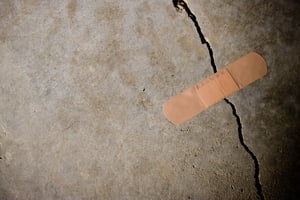 If you’ve purchased a new home recently, you may be familiar with the dangers of radon gas. If not, January is Radon Awareness Month.
If you’ve purchased a new home recently, you may be familiar with the dangers of radon gas. If not, January is Radon Awareness Month.
What’s radon?
Radon is an invisible, odorless, and cancer-causing radioactive gas. It’s naturally found in rock, soil, and water. According to the U.S. Environmental Protection Agency (EPA), radon exposure is the second leading cause of lung cancer. It’s estimated that 21,000 Americans die each year.
Unfortunately, there’s no escaping it. Radon has been found in all 50 states. Levels can vary from house to house or even floor to floor. Therefore, just because your neighbor’s home may have high radon levels, it doesn’t mean yours will.
How radon enters your home
Due to the difference between the pressure in your home and the ground, radon gas can be naturally pulled in. Radon can find its way into your home through:
- Cracks in your basement floor or foundation;
- Well water or your sump pump;
- Exposed soil in a crawl space;
- Loose fitting pipes; and
- Building materials such as brick, concrete, and rock.
If your home has high radon levels, you and your family have an increased risk of lung cancer.
How can you protect your family?
Testing your home for radon is the only way to determine if your home and family are at risk. No other signs can identify if there’s a problem in your home.
Types of radon test kits
There are two types of home kits available: short-term and long-term. Short-term kits can be purchased online or at big box retailers, costing between $10 and $30. This kit should be placed in the lowest part of your home for a specific time, usually a few days. After the designated time frame expires, mail the test kit to a lab to analyze your results. The results will be sent back to you.
A long-term kit can be purchased similarly, but costs range between $10 and $200. A long-term kit may collect particles anywhere from 90 days to one year. While long-term kits provide more accurate results, your family may be exposed longer. Experts recommend purchasing a long-term kit only if a short-term kit identifies a potential problem.
Lastly, another option for testing your home is hiring a professional service. While this method is most accurate and delivers results quicker, it’s also more expensive.
Testing for radon in your water
If you live in the city, the EPA provides testing guidelines that must be followed. If you live outside the city and have a private well, it’s your responsibility to determine if your water is safe. Experts recommend yearly testing.
What to do if radon levels are high
Contact a professional if a test determines dangerous radon levels in your home. They can provide additional testing, as well as design and install a radon mitigation system that is customized for your home. Once the system is running, follow-up tests will be done to ensure it works correctly.
Do you have any suggestions or information you’d like to share? I’d love to hear from you. Please share them in the box below.
Sources:
https://www.epa.gov/radon/health-risk-radon
http://www.radontestinglab.com/enterhome.asp
https://www.homeadvisor.com/cost/environmental-safety/test-or-remove-radon-gas/





